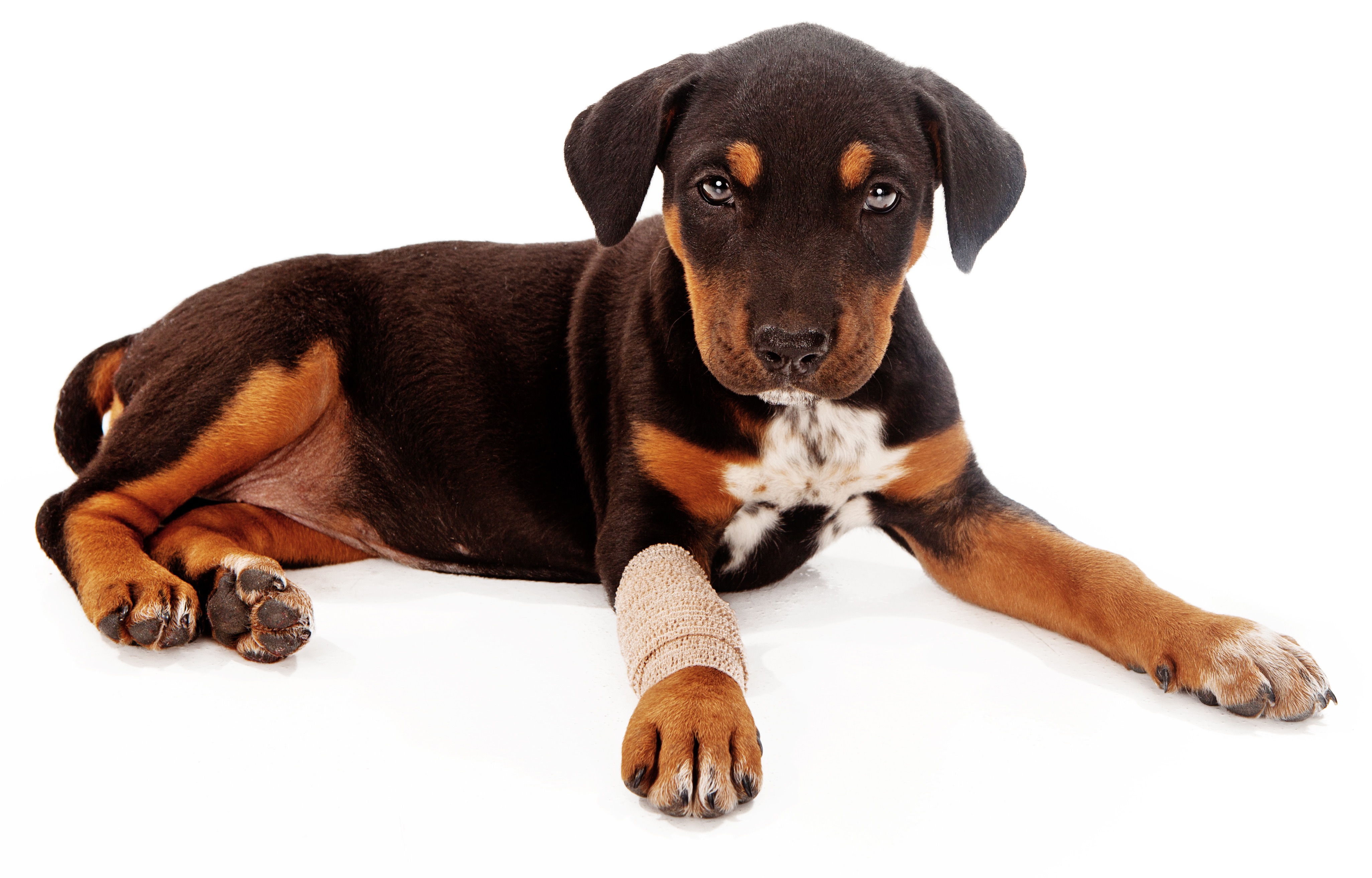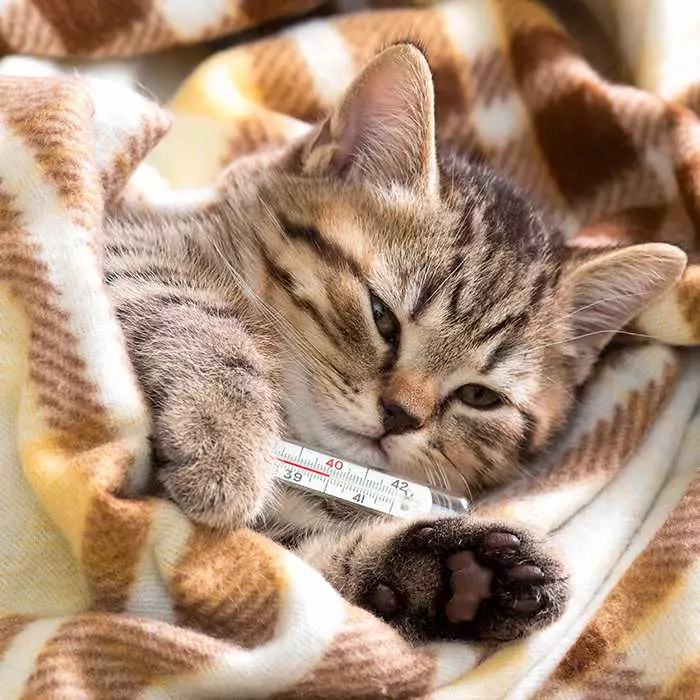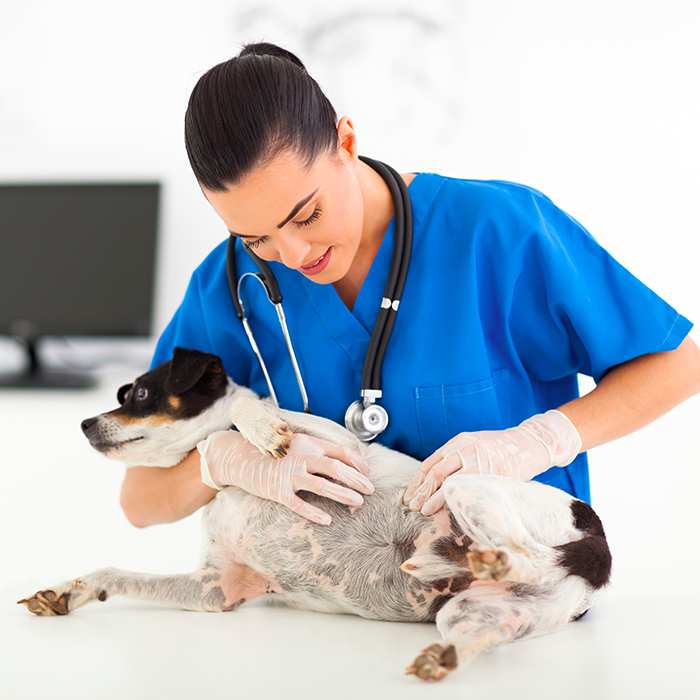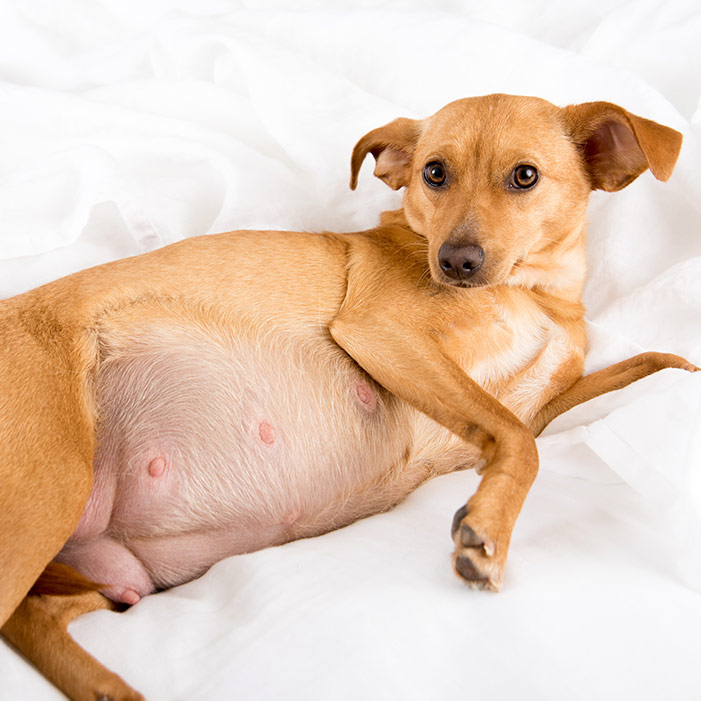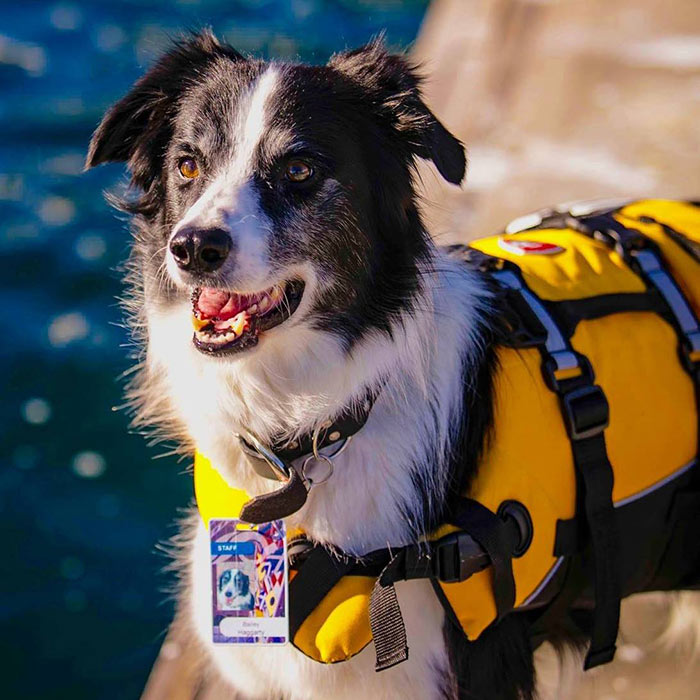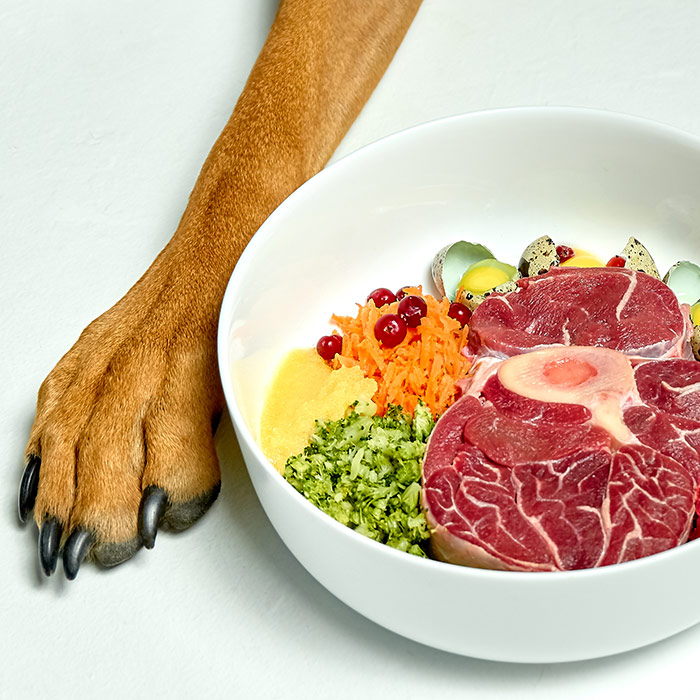Creating a Dog First Aid Kit and Administering First Aid for Dogs
Here are some tips on what to do in a dog first aid emergency:
- In a dog first aid situation the number one rule is to stay calm and don’t overreact, even if your beloved fur baby becomes unconscious or cries out in pain. Easier said than done!
- Make sure you know where your dog first aid kit is located and how to use it.
- Even the most loving, caring, cute-looking dog can bite when in pain. Your first priority must be to keep yourself safe and secure the dog so it can’t bite or run away. Speak to the dog in a soft and gentle tone of voice, approach the dog slowly and avoid rushing up and making unusual movements. Using a blanket to cover the dog can be soothing for some dogs and can help you to keep the dog calm while you administer dog first aid.
- Try to stay calm and think clearly about how to prioritize your response. For example, a dog that isn’t breathing needs CPR first before looking after a bleeding wound. A heavily bleeding wound doesn’t need to be sterilized and cleaned, but the bleeding does need to be stopped.
- Don’t let fear of doing something wrong stop you from helping. Even calling somebody for help is a way of assisting the dog. That person might know dog first aid or have a first aid kit in their car. Redirecting traffic in a car accident situation or driving somebody to the vet while the owner is holding the dog could save a dog’s life an make you somebody’s hero!
- Once you have administered dog first aid, call your nearest vet on approach. Make sure you tell them you are on your way, how far away you are, what kind of emergency it is (eg. heat stroke, car accident, poisoning) and that you have administered basic dog first aid.
Setting up your dog first aid kit
Store your dog’s first aid kit in an easily accessible location in your house and keep one handy in your car. Make sure you save the address and phone number of your closest 24 hour emergency vet in your phone for after hours veterinary care.
What to include in your home dog first aid kit:
Note that you can get all the items to make your own dog first aid kitat your local pharmacy.
The basic dog first aid kit supplies are:
- Absorbent gauze pads to stop bleeding of a wound or to use as bandages;
- Adhesive tape to secure gauze pads/roll;
- Antiseptic wipes, lotion, powder or spray to disinfect the wound after you clean it with sterile saline solution;
- Cotton balls or swabs to clean wounds or eyes;
- 2 x gauze rolls to stabilize a broken leg and make a dog muzzle out of it (see below for more info on how to do this);
- Ice pack in your freezer to cool down swelling;
- Non-latex disposable gloves to keep your hands clean from the wound;
- Scissors (with blunt ends) to cut gauze and adhesive tape but also to cut away dog hair to get better access to the wound;
- Sterile saline solution (sold at pharmacies) to flush out wounds, eyes or mouth;
- Tweezers to remove insects/thorns/spikes/wood splinters;
- Special dog tick tweezers to remove ticks (read more about ticks here)
- Pocket torch for easier inspection of ears, eyes and mouth;
- We also suggest you keep a blanket and a spare lead in your car.
You can also purchase pre-made dog first aid kits. Here are some link to purchase a dog first aid kit:
- http://www.stjohnambulance.com.au/first-aid-kits-and-supplies/first-aid-kits/details/0180
- https://dogculture.com.au/product/dog-first-aid-kit/
Common dog first aid emergencies
There are many different emergency situations that your dog can be involved in. In the following section, we discuss some of the more common dog first aid emergencies and how to handle them.
Dog First Aid – Car Accidents
It happens in the blink of an eye. A dog jumps out of a car or runs out of the front door and gets hit by a car and requires emergency first aid. So what should you do as an initial response?
- Firstly secure the accident location, ensuring you do not put yourself in danger.
- Stop cars, appoint people to redirect traffic and get your dog first aid kit out of the car.
- Then ensure the dog can’t get away- dogs that are in a panic or shock will often try to run away. Lay a blanket over the dog (this could calm them as well) or get a lead to secure to dog.
- If the dog is conscious, ensure he can’t bite by putting a muzzle on the dog (if available) or use a gauze bandage to make a muzzle sling (see diagram below).
- If the dog isn’t breathing administer CPR (see instructions below).
- If there is a wound – stop the bleeding by making a pressure bandage.
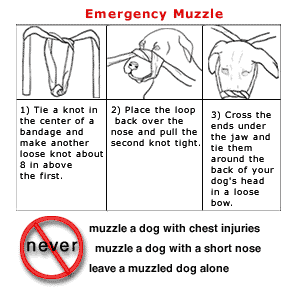
Making an emergency muzzle (Source: https://www.flyball.com/region5/Region%205%20Emergency%20Document%20for%20web_files/image006.gif)
If there is no breathing and/or no pulse, it is essential to begin CPR immediately!
How do you check your dog’s pulse? Use your middle and index finger to check the pulse on the femoral artery on the inner thigh of the back leg.
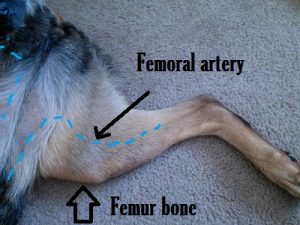
(Source: https://www.dailydogdiscoveries.com/wp-content/uploads/2016/08/femoral-artery-300×225.jpg)
Other warning signs are gray lips and gums, and dilated pupils.
If there is no pulse, dog CPR is required:
- Start by lying the dog on its side and placing your hands over its ribs where its elbow touches the chest.
- Begin to apply pressure.
- Do five compressions to one breath for dogs under 40kg, and ten compressions per breath for animals over 40kg.
- Do not give compressions if the dog has a pulse.
- If the dog still is not breathing, check its mouth and clear its airways if necessary.
- Place your mouth over the dog’s nose and mouth and blow air in.
- Repeat this procedure – count out loud when giving compressions and follow up with mouth to mouth.
- Check after one minute for a pulse and keep going until you have a pulse or the animal is breathing, or stop dog CPR after 20 minutes.
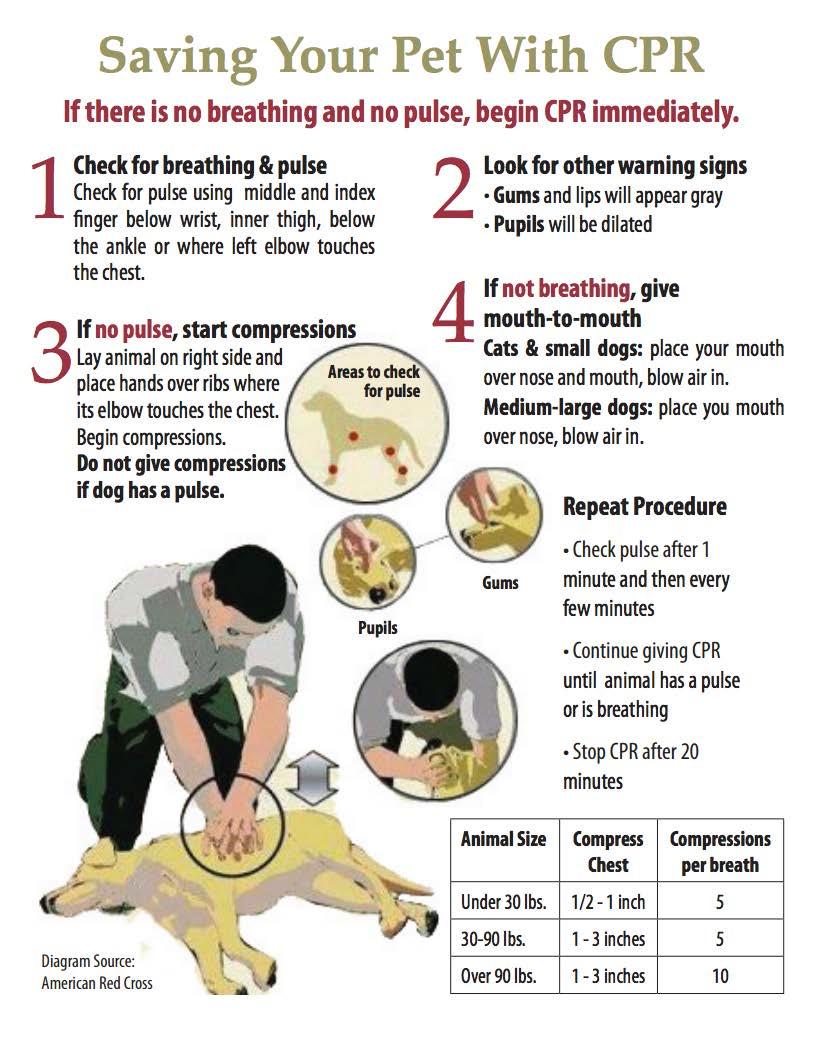
(Source: http://www.petguide.com/wp-content/uploads/2016/04/How-to-Perform-Dog-CPR-steps.jpg)
- Once the dog is stable enough to be transported, call the nearest vet and advise them that you are on your way. Be sure to advise them if you have administered dog CPR.
- Transport the dog on a hard flat surface, like a box for a small dog or a wooden plank for a larger dog. Fix the dog to the box or wooden plank with a rope or a belt so it is stable. It is important that the dog is not rolling around when you are driving.
Dog First Aid – Poisoning
Unfortunately dogs do not have an in-built instinct to stay away from things that may be harmful or poisonous. Puppies are more prone to ingesting dangerous substances, as they are very curious and experience the world through their mouths. There are a range of dog poisons around most of our houses and surrounding environments like the garden or garage, ranging from poisonous plants to foods, household cleaners or animals. Here we just list a few:
- Dangerous plants: tomato plants, rhubarb leaves, daffodils, tulips;
- Common households foods/substances that are dangerous to dogs: raisins, garlic, mushrooms, coffee, chocolate (read here why chocolate is especially bad for your dog), alcohol, cigarettes, and human medication like Panadol. Read more here.
- Common dangerous cleaners: window antifreeze and window cleaners as they contain alcohol, mould remover;
- Dangerous animals: snakes, spiders, snails, rats or mice that may have eaten bait to kill them.
Digestion of different types of poison will present differing symptoms as they have distinctive effects on the dog’s body. If you suspect ANY poisoning take your dog straight to the vet. If your dog has vomited, take the vomit with you to the vet – it could help identify what poison to treat the dog for.
Note: It is important to teach your dog a strong command to ‘leave’ something or not touch something, as this command can save your dog’s life when poisons are around.
Dog First Aid – Heat Stroke
Heat stroke in a dog can not only cause permanent damage but actually be fatal. Heat stroke is more common in dogs than it is in humans, as dogs cannot absorb heat as well as we do. Heat stroke is mostly caused by leaving a dog in the car in summer months or exercising a dog in very warm weather.
Leaving your dog in a car in warm or hot temperatures is extremely dangerous – almost as bad as putting them in a microwave. Opening the windows slightly or parking the car in the shade won’t make much of a difference. Leaving water in the car will not help when your pet is stressed.
In just 10 minutes, temperatures can rise by 10°C, in 30 minutes they can rise by around 20°C.
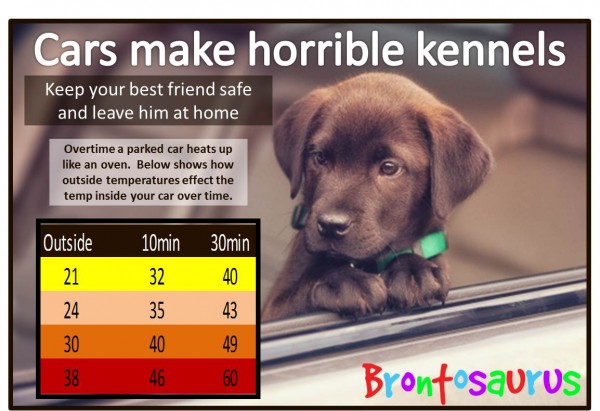
(Source: https://brontosaurus.com.au/wp-content/uploads/car-tempatures-e1417329922633.jpg)
If you suspect heat stroke and your dog shows any of the symptoms below, take your dog to the vet immediately.
Symptoms of heat stroke:
Red enlarged tongue
Cramps
Heavy fast breathing
Disoriented/non responsive/coma
Collapse
Vomiting
Frothing, thick saliva
Health effects of heat strokes are often underestimated. Even if the dog seems fine, it could die hours later without having shown any symptoms. Heat stress can also cause problems such as blood clotting which maybe be unnoticed and can result in death.
If you suspect heat stroke, cool your dog down using wet towels, encourage your dog to drink and make your way to the vet. Medical research has shown that making it to the vet less than 90 minutes after a suspected heatstroke can mean the difference between life and death.
Dog First Aid – Broken Bones, Small Wounds or Cuts
Broken bones:
Did you know that dogs have a total of 319 bones in their bodies? A broken bone can be very painful and will require not only medical attention but also the quick stabilisation of the break.
The less movement to the broken bones the better. Never try to put the bone back in place yourself. This could cause more injuries. As it is very painful for the dog, it is highly recommend to muzzle the dog before administering first aid and stabilizing the break.
How to identify a broken bone:
- The dog won’t put any pressure onto the leg and is limping;
- The leg looks bent and unstable;
- The bone is showing through the open wound;
- If the dog’s face looks asymmetric and the animal does not want to eat, its jaw could be broken;
- Heavy breathing and a swollen rib cage could indicate a broken rib.
For a dog to break a bone there has to be a significant impact, and other organs can sometimes get injured when the break occurs. Be mindful of this and stabilise the broken bone with anything you have handy like a paper role, a stick or a piece of cardboard, and then get them to the vet as soon as possible.
Cuts and small wounds:
Dogs like to run through bushes, woods or on the beach and injuries like cuts from broken glass, sticks or oyster shells can happen quickly.
If the blood is dark red and running fast, don’t worry about sterilising the wound – stopping the bleeding has the highest priority. Use the sterile non-stick gauze pads from your dog first aid kit and wrap it tight with a bandage wrap. If it is a small wound, remove any foreign objects like wood splinters or glass with the tweezers from your first aid kit, flush it out with sterile saline solution and then put the gauze pads on the wound and bandage the wound before you take your dog to the vet.
If the blood is light and flowing slowly, try sterilizing first, remove any foreign objects and stop the bleeding before you get to the vet.
Remember, even small wounds can get infected and potentially cause a blood infection. It is important to get wounds cleaned out professionally and ensure they don’t need stitches or preventative antibiotics.
Other common dog household emergencies
Dog first aid: Burns
Burns can happen quickly…your curious dog gets too close to the BBQ, the stove or an open fire, or perhaps he just wants to check out with his paws what is in the oven.
If your dog gets burnt, immediately cool off the burn area by running cold water over it for 20 minutes, just like you would do for humans. If more than 2.5% of the dog’s body gets burned, the animal can go into shock. Therefore, it is recommended that with any burn you seek medical assistance as further observation or a course of antibiotics may be required.
Dog first aid: Electric shock
Curious puppies or dogs can decide to chew on electric cables, and end up with an electric shock.
Ensure that you turn off the main power line first and unplug the cord before you touch your dog. The electricity might still be running through your dog and you don’t want to be electrocuted trying to administer first aid.
Your dog may potentially require CPR and/or ice blocks for its burnt mouth. Take your dog into a dark room to overcome the shock it has just had and once it is calm and stable, take it to the vet. Your dog will require some medical attention over the next couple of days, as electric shocks can have effects down the track.
Dog First Aid: Dog bites
Dog bites are very common and can happen anywhere where dogs come together. Dogs can get into fights and scuffles in dog parks, on walks or even at home. If your dog has a long haired coat, you won’t know the depth of the dog bite. It is important to cut the hair off so you and your vet can inspect the depth of the dog bite. If it is deep or wide, your vet may need to administer staples or stitches.
After a dog bite your dog can get an abscess of pus growing under is coat, which can be very painful if not treated correctly.
Each bite can cause infections and a course of antibiotics might be required to prevent serious infections. Check your dog and administer first aid if required.
Dog First Aid: Choking
Dogs, and especially puppies, explore the world with their mouths and like to put anything they find into their mouths. Even adult dogs can easily choke, so it is important to know how best to respond when this happens.
To save your dog’s life, remove the item from its mouth: open its jaws with both hands by placing one hand on the bottom jaw and one on the top, then open the dog’s mouth and remove the item. If the item cannot be removed or your dog is small, hold your dog upside down. Lift its back legs up in the air and sway it up and down so that the item can drop out of its jaw.
If the dog is big and you can’t lift it by the back legs, place your arms around the lower abdomen and lift its back up and sway it up and down to help dislodge the item.
Here a great video demonstrating how the Heimlich Manoeuvre is done:
Dog first aid courses
Dog first aid courses are a great way to advance your knowledge and practice your skills for a real life scenario. If you work with dogs or you just feel you want to be prepared when your dog gets into an emergency, it is recommended that you take a dog first aid certificate. There are many good dog first aid courses available. For more info check out https://firstaidforpets.net
There is also a dog first aid app that may be of assistance during an emergency situation. It advises how to administer dog CPR and other dog first aid tips that can assist you in a dog emergency situation.
https://itunes.apple.com/us/app/pet-first-aid-by-american-red-cross/id780415389?mt=8
Other handy apps for dog lovers can be found here.
Dog pet insurance
Being insured can be a great relief when it comes to covering medical bills incurred in emergencies. It can help relieve the financial stress away, when worrying about finances is the last thing you need. Get a quick pet insurance quote here.
In a nutshell
When your dog is in an emergency situation it is important to stay calm, make sure any helpers will be kept safe, and seek medical assistance as soon as possible. Having a basic knowledge of dog first aid is important, and even a bookmark to this article or an app on your phone could help in moments of stress. Make sure you have a dog first aid kit ready to go at any time and put a print-out of this article in your dog first aid kit.
Bow Wow Meow Pet Insurance can help protect you and your dog should an unexpected trip to the vet occur.
-
Find out more about our dog insurance options
-
Get an online pet insurance quote
Bow Wow Meow is proud to have been awarded winner of Canstar’s ‘Most Satisfied Customers’ Award in the Pet Insurance category for both 2024 and 2025!
Bow Wow Meow is proud to have been chosen as Product Review’s Pet Insurance Award Winner every year from 2018 to 2025! This is based on 2,995 independent customer reviews (as at 21/01/2025), with an overall rating of 4.3*
Google Review rating = 4.5* (based on 968 reviews)
Trust Pilot rating = 4.6* (based on 531 reviews)
Bow Wow Meow is proud to have been chosen as Product Review’s Pet Insurance Award Winner every year from 2018 to 2025! This is based on 2,995 independent customer reviews (as at 21/01/2025), with an overall rating of 4.3*
Google Review rating = 4.5* (based on 968 reviews)
Trust Pilot rating = 4.6* (based on 531 reviews)
Bow Wow Meow has been chosen as a winner in the Finder Pet Insurance Awards 2024. Finder’s panel of experts analysed over 140 quotes to award our Ultimate Care Plan the winner of the “Pet Insurance – Value” category.

